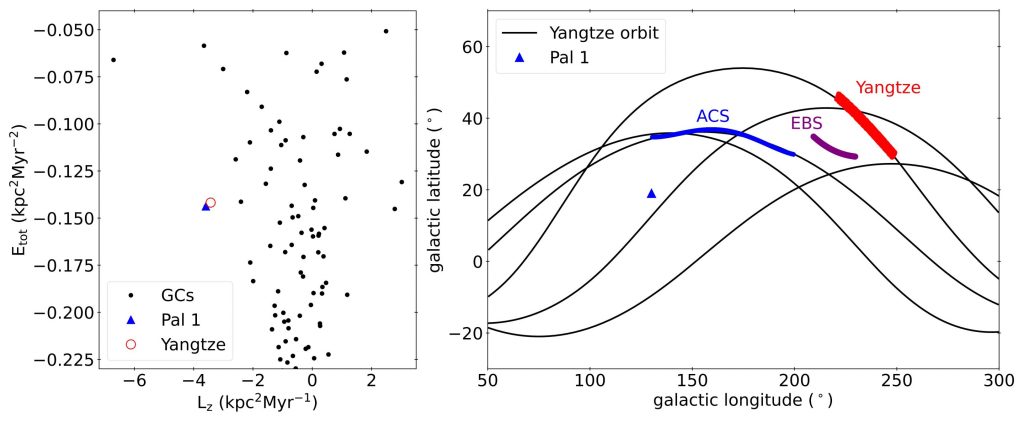Recently, analyzing the Gaia 3 (DR3) data release, researchers led by Dr. Yang Yun and Dr. Zhao
During the study, scientists proved that the Yangtze is notis an artificial signal based on interstellar extinction and the Gaia DR3 scanning pattern. It was 1.9 degrees wide and 27 degrees long in the sky. It lies at a distance of 9.12 kpc (kiloparsec) from the Sun, and its metallicity [Fe/H] has been estimated at -0.7 dex.
The researchers also tried to understandIs the Yangtze connected to other known streams and globular clusters in the Milky Way. They found that the globular cluster Pal 1 was quite close to the Yangtze in angular momentum and energy space, and the Anticentral Stream (ACS) was almost in its orbit. The observational results suggest that the Yangtze may have a close relationship with Pal 1 and also with ACS.
 Left: globular clusters and the Yangtze in angular and energy space; right: Yangtze orbit and trajectories of known streams. Illustration: Yang et al.
Left: globular clusters and the Yangtze in angular and energy space; right: Yangtze orbit and trajectories of known streams. Illustration: Yang et al.
The Milky Way increases mass by merging with low-mass dwarf galaxies. Some of them change due to tidal forces as they orbit the galaxy, losing stars.
As a result, on one or both sides of thesedwarf galaxies have tidal tails known as stellar streams. The most typical of them is the stream of Sagittarius. However, there are still far more outflows generated by globular clusters than by dwarf galaxies in the Milky Way.
Read more:
One planet can put an end to life on Earth: how scientists have proven the fragility of the solar system
Treasure found that was hidden during the war almost 1,000 years ago
Notre Dame fire helps scientists unravel the secret of the cathedral's construction
On the cover: Artistic depiction of the Sagittarius dwarf galaxy in its current approach to the Milky Way.
Photo: Gabriel Perez Diaz, SMM/IAC